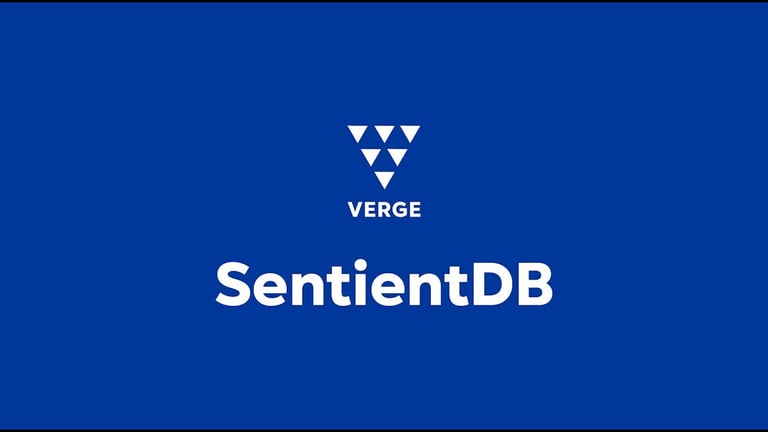Verge Technologies President and Chief Executive Officer Jimmy Jobe caught up with DirectorsTalk to discuss how the company is empowering enterprises to eliminate cloud dependency risks and transition to a resilient, AI-driven database infrastructure.
Q1: Verge Technologies’ mission is to remove the boundaries and borders of global enterprise management. After the recent AWS outage, what lessons should global enterprises take away from their current boundaries and how is Verge helping them to operate without those limits?
A1: I think it’s a couple of different things. One lesson is probably from the AWS perspective and one from the AWS client’s perspective.
From AWS, I think it pointed out the interdependencies and the lack of redundancies of systems and between systems. When one system went down, there was a cascading domino effect for several other systems to go down. What that did is that cascading failure started affecting more and more businesses that were using some of these adjoining services. So, I think one lesson from the AWS perspective, is to see what they can do to install more redundancy and less dependency between systems so that the others stay up when one goes down.
The second thing would be really from more of a perspective of their clients. I think that if putting all of your business processes and your infrastructure under one service provider, obviously gives you a single point of failure. If they go down, you go down.
So, I think that the businesses that were putting all of their critical infrastructure in AWS, and AWS only with no failover or no backup or anything, puts them in a position where they’re at the mercy of AWS when it goes down, they go down.
Q2: Now, many companies are already using multiple cloud providers, but often out of necessity, not by design. How does Verge help enterprises move away from accidental multi-cloud to true intelligent cloud convergence? What does that look like in practice?
A2: I think there’s two parts to that question. One is, what do I do from a system architecture standpoint? Secondly, how do I manage that once I’ve implemented it?
Let’s talk about the first part of that is multi-cloud by design, not by accident or necessity. So, today, many companies are using multi-cloud out of necessity. In other words, wherever their distributed enterprise footprint is, and they need to be able to collect data, process data at that point, there may not be an AWS or Azure or Google or Oracle at every street corner. They have to turn up regional and local service providers in order to do business there so then it’s the problem of trying to integrate all of that back into their main business processes.
For every one of those service providers, they turn up out of necessity, if you would just do a slight mindset change to look at that as an asset versus a liability? In other words, now that I have this turned up and I have compute and storage capability at this new site, then I should use that new site as part of my redundancy, as part of my failover, as part of the design to ensure that if any one service provider goes down, that’s handling my critical got-to-have business processes, that I either have a backup or have a failover.
Gartner says today that the enterprises are using between four and seven different service providers, they’re doing that mostly out of necessity, not out of design. If they would shift that to install redundancy, resilience, failover, backup, then their dependency on a one AWS failure would dramatically go down. I’m not saying that the systems in AWS that they have hosted won’t go down but if you have those other things in place, you can recover much faster than if you were just depending solely on AWS, if that helps.
Q3: You’ve talked about the risk of putting all your data eggs in one basket. What does agnostic database mobility really mean for enterprise IT leaders? How does Verge Technologies make it possible to move and manage workloads across clouds, as if they were just one virtual data centre?
A3: Well, that gets to the second part of the previous question; how do you manage that? Once you’ve adopted a multi-cloud strategy by design and you’ve implemented what Verge is able to do, whether you’ve created that out of necessity or out of design. It gives you, the enterprise, the capability of managing and optimising the performance and controlling all of your database assets across your enterprise footprint, as if they were in one virtual data centre.
In other words, Verge gives you a single view, a unified or federated view of all of your database assets, how they’re running, and it gives you the capability so that you can predict workload issues, balance workloads across cloud environments or within a single environment and gives you the ability to self-heal and manage that particular asset.
So, by using Verge, you’ve taken out a lot of the touch that you’re doing today. We’re talking about managing and controlling an environment to prevent outages, to resolve outages, to mitigate performance issues before they happen. So, by monitoring, predicting, and taking action within a particular service provider and across all of the service providers you have turned up to support your enterprise, we bring all of that unified management in one platform, in one console, through one pane of glass.
Q4: Now the AWS outage revealed just how fragile even the biggest cloud infrastructures can be. How does SentientDB’s S-Secure Intelligent Data Mobility Model ensure that database outages become a thing of the past?
A4: So, what we do at Verge, and more specifically with our flagship product, SentientDB, is that we are able to monitor and take action based upon the real-time data of that database while it’s processing transactions. In real time, at runtime.
So, if we predict a workload issue, let’s say we’re predicting that in the next 30 minutes, that your CPU utilisation will go over 100%, we can then take that particular knowledge, based upon the real-time data that’s being collected, and we can turn up another server or another database instance. We can cluster those two together and prevent an outage that’s coming by taking action in real time based upon the AI prediction of workload issues.
By doing that, we can do a self-managing and self-healing environment for every database in your enterprise so that you’re always able to meet your service-level agreements, your SLAs, and you can do it in a very intelligent way. Every database is set up to be policy-driven as to what actions we’re taking when certain situations come to fruition.
Q5: You mentioned that the next evolution of IT management will be autonomous, AI-based, self-managing and self-healing systems. What does that future look like? What role do you see Verge and SentientDB playing in shaping that era?
A5: I think it’s several things. SentientDB is the first product in the market that has this capability. There will be others that will follow. My prediction is that within the next four to five years, AI will be the predominant technology in managing IT on a global basis. It has the ability to provide that self-managing and self-healing environment that we’re talking about in the future, but that future is here today with Verge Technologies and SentientDB.
We can install within your enterprise and start managing your databases within three or four days. It’s just that easy. We can do that within and across all cloud environments and give you that single view and management plane you need in order to effectively manage and control all your database assets.
So, I believe what Verge Technologies is doing is indeed removing the boundaries and borders of IT management to make it a global management fabric that allows the enterprises to manage all their database assets, no matter where they are located, no matter who’s hosting them, and no matter what environment they’re in.












































